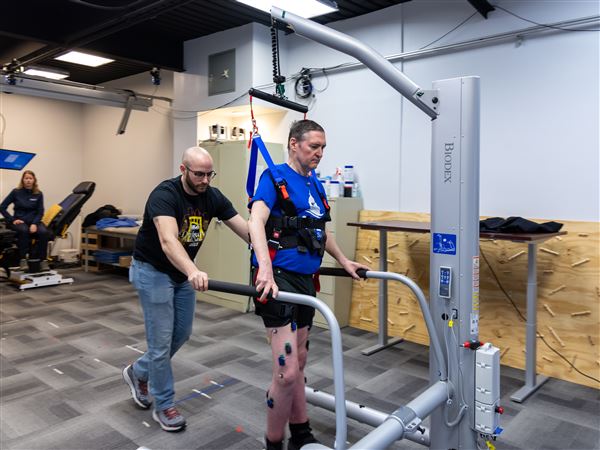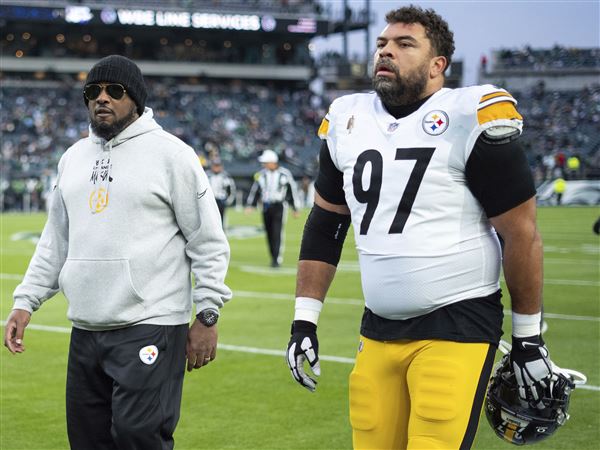Fewer and fewer drivers use traditional fold-out maps in the car. Instead, they simply print out maps and directions for where they're heading from one of the popular mapping sites on the Web, often moments before they leave.
One such Web site, MapQuest, a subsidiary of America Online at www.MapQuest.com, has long been a favorite. Its straightforward, no-frills approach asks you to enter "start" and "end" points for your trip, and selecting "Get Directions" completes your navigational duties. Numbered instructions, a map, and an estimated total time and distance for the trip are retrieved to help you along your journey. Yahoo also built a following with a similar plain mapping site.
But, since Google entered the category with a flashy new type of mapping service earlier this year, competition in the online-mapping category has heated up. All of the big portals and search engines are looking to build their local search businesses, which they see as a golden opportunity for ad sales and other revenue. And they have come to see their mapping functions as a gateway to these local search databases, which make it easy to find businesses and services in the areas people want to map.
This week, my assistant Katie Boehret and I tested the old reliable, MapQuest, against Google Local, http://maps.google.com, and a new, enhanced version of Yahoo Maps, http://maps.yahoo.com/beta. Yahoo's new site was just released last week, and it's still in its "beta," or test, phase.
As everyone who has used online mapping knows, it has its limitations. The mapping services too rarely spit out the kind of smart, speedy routes a savvy local driver would choose. Their suggested routes are generally more convoluted, and sometimes wrong. But, in most cases, they do get you where you're going, and thus are a boon to drivers unfamiliar with the area in question.
These newer sites are free, like MapQuest, but they offer some fancy features, like the ability to pan across a map simply by moving your mouse's cursor, or zooming in or out on a location quickly. Google adds satellite photos of the actual locations, down to the trees in your front yard.
MapQuest looks a little dowdy by comparison to the newcomers, but it works for a lot of folks because it gets people from point A to point B, without any extra fuss. So, we tested these new features from Google and Yahoo to see if they were actually useful, or just a lot of hype that muddied up the direction-retrieval process.
Overall, we concluded that, for the sake of getting where you're going with the most-thorough directions, MapQuest still does the best job, with the most accurate directions. But Yahoo has a multipoint routing feature that's valuable. And, for some, the ability to quickly pan a geographic region on Yahoo and Google -- with satellite photos on the latter -- can familiarize them with the surrounding area and make the drive easier.
Last weekend, Katie traveled a little more than three hours from Washington, D.C., to Bethany Beach, Del., and used three sets of directions from MapQuest, Google Local and Yahoo Maps. MapQuest's time estimate of two hours and 45 minutes was too optimistic, but Google and Yahoo each estimated three hours and 12 minutes, which was just about right.
Though different trips might have different results, Katie noticed that in more than one case Yahoo and Google each suggested taking smaller, less popular roads instead of staying on the state routes as MapQuest suggested. Katie went with MapQuest instead to avoid reading more street signs -- especially at night in rural areas.
She also noticed that Google more often referred to labeled routes by their ever-changing street names instead of route numbers or the main name of the highway. For example, three separate directions from Google involving Market Street, South Main Street and Seashore Highway were all summed up on MapQuest as MD-404/Seashore Highway, saving time and confusion. Yahoo's directions were unnecessarily complicated and detailed.
The printouts from each site also made a difference. MapQuest uses capitalized letters for street names and directions, such as, "Turn RIGHT onto OCEAN VIEW PKWY," and prints the mileage for each line of directions aligned on the right side of the page, making it easy to find how far you must travel for each step. The mileage estimates on Yahoo and Google were only distinguished with bold type at the end of each sentence of directions. These were harder to find, especially in a tense situation, Katie found out.
While I didn't run a new test for this column, I have tried all three services in the past year, and found MapQuest the most reliable. In fact, in one case this summer, Google led me totally astray, omitting a key turn.
And, just the other day, I encountered another example of a lapse in Google's maps. After reading that Britain's Prince Charles had worshipped at a small church in the little California town of Inverness, I decided to see where Inverness was. I did a regular Google search, which produced links to all three services. MapQuest and Yahoo quickly showed a map with Inverness clearly marked. To my amazement, Google's map didn't show the town's name at all, even though it showed the region it was in, and could zoom down to the town's street map.
Google starts you out in familiar territory -- the box in which you enter a location, business or directional instructions looks just like the regular Google search box. By default, the entered data searches a map of the United States. If you'd rather select the "Search Businesses" option on the right, you can enter the appropriate "what" (Chinese food) and "where" (Washington, D.C.).
A third option on the right, "Get Directions," brings up two boxes for the start and end addresses. Here, in between the two boxes, is a simple set of switch arrows; you can easily click those arrows and save time getting a reverse route (also offered at MapQuest and Yahoo) or move the destination address over to be the next starting point. But Google Local doesn't offer multipoint routing; currently you can only map out a route with one destination point at a time.
Google Local's most unusual features are its map views -- including satellite and hybrid images of the streets. Satellite views are photos of the location taken by actual satellites; hybrid images are the same satellite views of the streets with typed labels, like regular maps. These satellite views are fun to see, but for the most part, don't help all that much when you're driving.
Yahoo's multipoint routing is a serious strong point for the new site. It allows you to map a route to multiple, succeeding destinations. To enter more than one destination on Google Local or MapQuest, you have to restart your direction search, retrieving a different map for each leg, which is time-consuming and frustrating.
Yahoo always offers a blank destination box succeeding your last entered destination. All entered locations are listed to the left of each map, up to 26 in all. Each destination is designated by a letter of the alphabet, clearly marked on the map to the right, while the multipoint directions appear almost instantly on the left, with the same letters and destination names inserted in the appropriate spots.
Another smart feature that Yahoo uses is its mini map -- a collapsible map in the top right corner of each larger map that uses a gray box to highlight the focus area. You can drag this gray box around within the mini map, which saves you from panning all over the larger map. Google doesn't offer such an option.
All three mapping services offer to find businesses and restaurants near your locations, but Google and Yahoo use their already established search engines to offer more information about those locations. Yahoo incorporates Yahoo Local, its online community of users, to list data such as restaurant ratings, making the experience a little more informative.
Google lacks a handy feature of MapQuest and Yahoo -- the ability to manually save a list of often-used destinations so you can call them up quickly again.
Google and Yahoo don't show any ads on their sites, nor do they print out ads on their printed directions. MapQuest's site has ads, and it prints one ad out with each set of directions.
If you're satisfied with the MapQuest experience, stick with its smart printouts and accurate directions. Yahoo's multipoint feature might come in handy for errand-filled Saturdays, and panning around your area on Yahoo or Google is helpful, in terms of getting a better overall sense of where you are. But these two new sites need to offer better directions and better print-outs before we'll give up on MapQuest.
First Published: November 9, 2005, 5:00 a.m.















